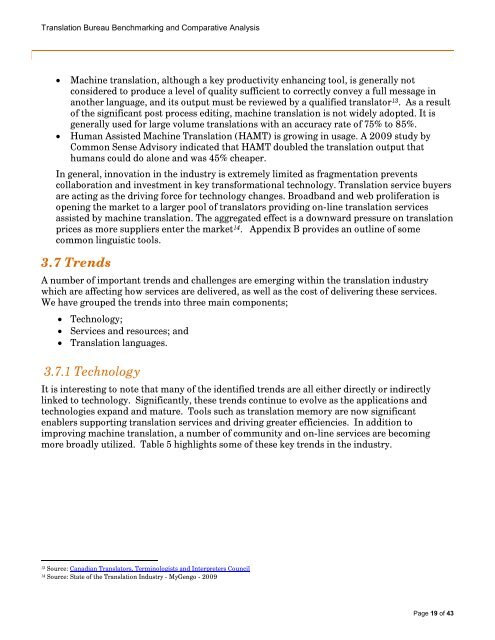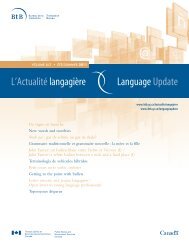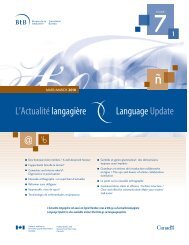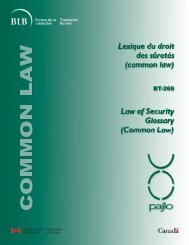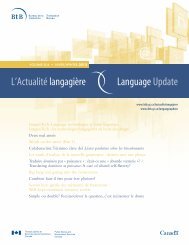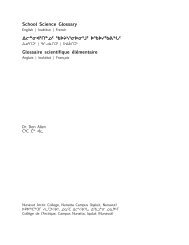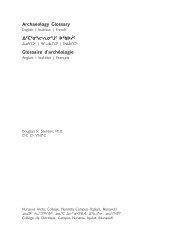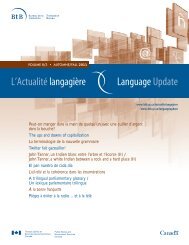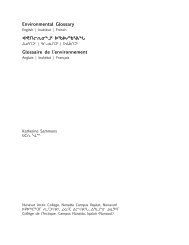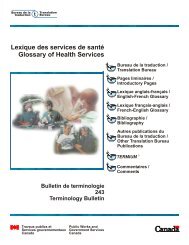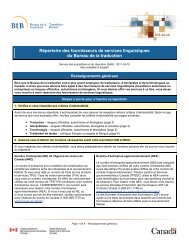Translation Bureau Benchmarking and Comparative Analysis - Final ...
Translation Bureau Benchmarking and Comparative Analysis - Final ...
Translation Bureau Benchmarking and Comparative Analysis - Final ...
You also want an ePaper? Increase the reach of your titles
YUMPU automatically turns print PDFs into web optimized ePapers that Google loves.
<strong>Translation</strong> <strong>Bureau</strong> <strong>Benchmarking</strong> <strong>and</strong> <strong>Comparative</strong> <strong>Analysis</strong>• Machine translation, although a key productivity enhancing tool, is generally notconsidered to produce a level of quality sufficient to correctly convey a full message inanother language, <strong>and</strong> its output must be reviewed by a qualified translator 13 . As a resultof the significant post process editing, machine translation is not widely adopted. It isgenerally used for large volume translations with an accuracy rate of 75% to 85%.• Human Assisted Machine <strong>Translation</strong> (HAMT) is growing in usage. A 2009 study byCommon Sense Advisory indicated that HAMT doubled the translation output thathumans could do alone <strong>and</strong> was 45% cheaper.In general, innovation in the industry is extremely limited as fragmentation preventscollaboration <strong>and</strong> investment in key transformational technology. <strong>Translation</strong> service buyersare acting as the driving force for technology changes. Broadb<strong>and</strong> <strong>and</strong> web proliferation isopening the market to a larger pool of translators providing on-line translation servicesassisted by machine translation. The aggregated effect is a downward pressure on translationprices as more suppliers enter the market 14 . Appendix B provides an outline of somecommon linguistic tools.3.7 TrendsA number of important trends <strong>and</strong> challenges are emerging within the translation industrywhich are affecting how services are delivered, as well as the cost of delivering these services.We have grouped the trends into three main components;• Technology;• Services <strong>and</strong> resources; <strong>and</strong>• <strong>Translation</strong> languages.3.7.1 TechnologyIt is interesting to note that many of the identified trends are all either directly or indirectlylinked to technology. Significantly, these trends continue to evolve as the applications <strong>and</strong>technologies exp<strong>and</strong> <strong>and</strong> mature. Tools such as translation memory are now significantenablers supporting translation services <strong>and</strong> driving greater efficiencies. In addition toimproving machine translation, a number of community <strong>and</strong> on-line services are becomingmore broadly utilized. Table 5 highlights some of these key trends in the industry.13Source: Canadian Translators, Terminologists <strong>and</strong> Interpreters Council14Source: State of the <strong>Translation</strong> Industry - MyGengo - 2009Page 19 of 43


